|
Recently I posted my Top 10 Go To Activities and I included a description of Four-of-a-Kind - my portable discovery for Word Building written up in the book 50 More Ways to Use Your Noodle. Well, say hello to JUMBO Bananagrams!! If you don't know about bananagrams its a table-top word game - like Scrabble but without the board (sort of). The original small version has been out for years and now there is a set with pieces 3 by 3 inches made of flexible rubber (in a handy bag). So, waterproof and durable. Just great for adventurers like us!! Find your Jumbo set on Amazon.com
|
|
Now Word Building can be more portable (don't get me wrong, I love to use my 3.5 inch diameter lettered noodle chips every chance I get - but sometimes I can't get them to where I'm going).
Word Building Set Up: Use a 50 foot activity rope and lay out a big circle. Scatter the JUMBO letters, face down, inside the big circle (see picture). Then, set down one game spot (or Hula Hoop, or carpet square) for every small group of 2 to 3 players about 5 feet from the outside of the rope circle. You're ready to go! |
|
To make the team building more interesting, you'll want at least six small groups of 2 or 3 players each. So, this one works well with 12 to 24 participants (in my experience) with one set of Big Bananagrams. Put a small team at each of the game spots you've placed around the outside of the rope circle. And tell everyone The Objective of the activity is for each team to spell of five-letter word (or you could play a round of four-letter words first) using the lettered pieces inside the large rope circle.
|
This is a timed activity. When you say "GO" the following rules are in play until every small team has a five-letter word. The "group" is after completing the objective in the lowest possible time.
- Only one player from each team can enter into the circle of letters at a time (i.e., if there are six teams, up to six people can be in the circle).
- After entering the circle you are only allowed to pickup/touch one letter piece.
- If you choose to take this piece from the circle you and your small group "teammates" may not look at the letter until it is flipped over onto the team spot/carpet square. [NOTE: Nothing was said in this rule about someone else in the group seeing the letter piece once it is picked up inside the circle - this is often discovered as a "helpful" behavior after a few rounds of play.]
- All players on each small team must take turns going into the letter circle - meaning, all players from a small team must go into the circle once before someone can go in a second time and so forth.
- If your small team decides to keep the letter taken from the circle it is placed down on the floor/ground and must be touching the spot or be touching a letter that's touching the spot.
- If your team decides NOT to keep a letter it is brought back into the circle and placed face/letter down inside the circle. In other words, if you don't want a letter it goes back into the circle. This means you may not hand a letter that you have to another team.
- Each small team may only have up to six letters at their spot - when the seventh letter is brought to a teams spot one must then be taken back to the circle on the next players turn.
Remember, the objective is for EVERY small team to spell out a five-letter word. This means the activity is not over - the time does not stop - until all small teams have a word.
This is one of my favorites (could be my favorite) because of the "helping" and planning behaviors that can show up. What do the plays of a small team do when they have spelled their word? Usually, at first, they end up sitting around until everyone else gets done. When you play several rounds for time someone usually figures out they are able to help other teams still playing within the rules. For example, a player can get a letter, bring it back to their spot, look at it, then the next player from the team can call out what the letter is as she puts it back (face) down in the circle. Or, players could go around to other teams to see what they need and then go into the circle and work to find it. In most cases I've seen the entire group eventually work together from the start (after two or three rounds) and plan where they will discard the letters so others know where to look. Lots of possibilities! (There are a few more details about this process written in Four-of-a-Kind - follow My Top 10 link above.)
AND, there is so much more team building to be done with letter pieces! DOUBLE AND, the game Bananagrams itself is great fun. Play by the official rules with small teams of 2 or 3 - when "Take" is called, someone from each team runs to the center pile for a letter (or two, depending how you play). For those in the know: Can we say COMMON CORE team building?!
Let me know how it's going out there. Leave me your thoughts in the comments below.
Have FUN!
Chris Cavert

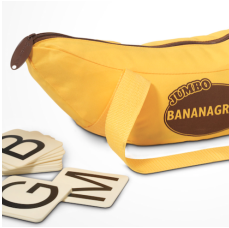
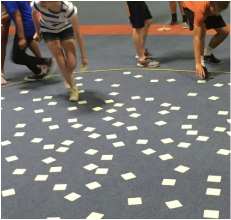
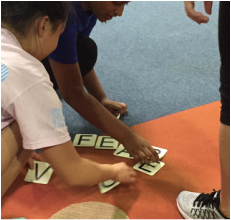
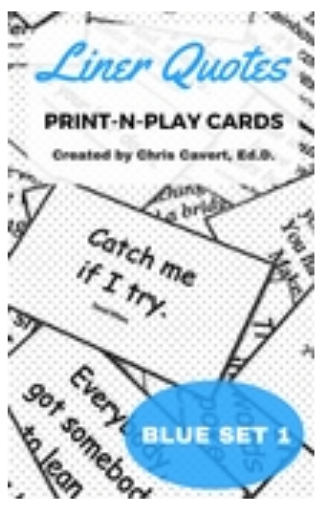
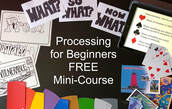
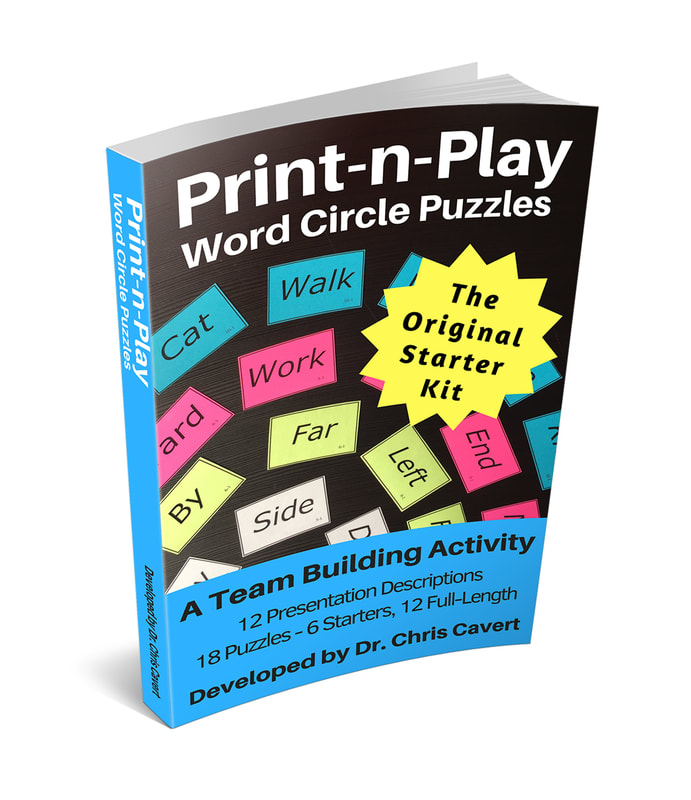


 RSS Feed
RSS Feed